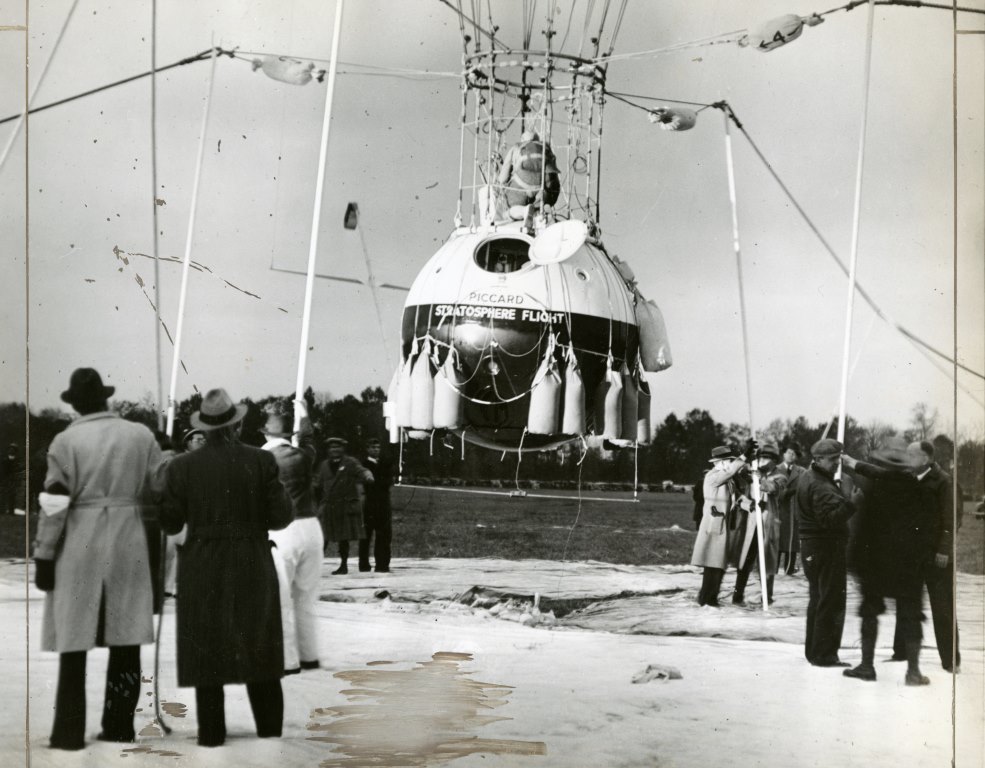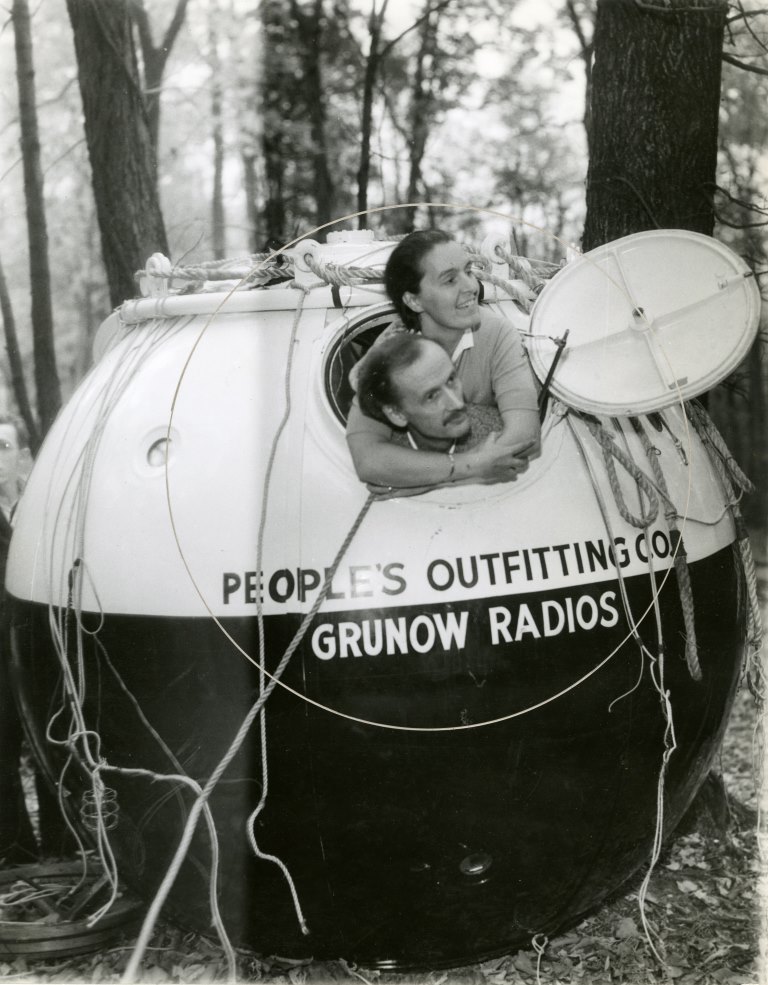Up, Up and Away

Before rockets sent people into space, the furthest away from the earth that people could get was in specialized high altitude hydrogen balloons. One very notable 1934 balloon flight began at Ford Airport in Dearborn. The husband and wife team of Jean and Jeannette Piccard had been training at the airport where Jeannette, the pilot of the craft, worked to become the first licensed female balloon pilot in the U.S. Henry Ford even allowed them to use his hangar. The Piccards’ intention was to reach the stratosphere, both to set an altitude record and to collect scientific data. Their pioneering flight took place October 23, 1934, leaving Ford Airport and crash landing eight hours later 300 miles away at Cadiz, Ohio. They reached 57,579 feet, almost 11 miles up, and while the data they collected proved to be of little help to scientists, Jeanette set the women’s altitude record which held for almost 30 years. As the Piccards’ pet turtle was also along for the ride, it is likely that it also set the unofficial altitude record for turtles or reptiles of any kind.

Minor injuries were sustained upon landing and the gondola was damaged beyond repair. It was retired to the Museum of Science and Industry in Chicago the next year. After their momentous flight, the Piccards settled in Minnesota where Jean continued flying and studying balloons for the rest of his academic career, and famously lent his name to the Star Trek character Captain Jean-Luc Picard. Jeanette, however, was controversially ordained an Episcopal priest in 1974. Both were posthumously inducted into the International Space Hall of Fame in 1998.


